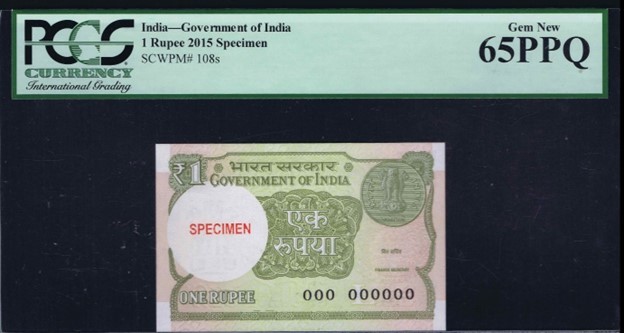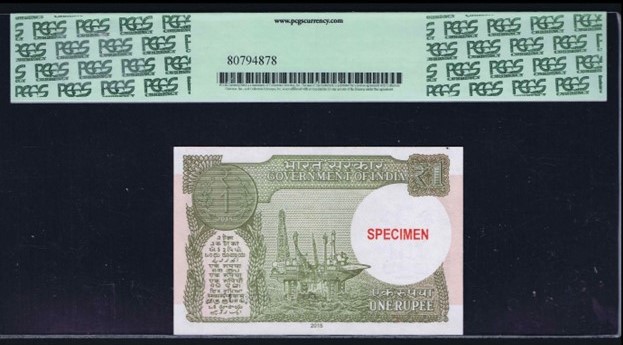A specimen banknote is printed in extremely small quantities and distributed to central banks to help in the recognition of banknotes from a country other than their own.
In some cases, specimen banknotes are printed in less limited quantities distributed to commercial banks, or even to commercial enterprises and the public at large in order to familiarize users about new designs. In addition, specimen banknotes are sold in some countries to collectors (often in special commemorative folders or albums).
To avoid use of specimen banknotes as legal tender notes, the banknotes are deformed, typically by being overprinted and/or punched (perfin) with an inscription such as "SPECIMEN", "SPECIMEN NO VALUE", "CANCELLED" or the equivalent in one or more other languages. In most cases, specimen notes have readily-identifiable serial numbers such as "99999999999" or "00000000000" or "1234567890".
1-Rupee 2015 Specimen, a rare note
This uncirculated 1 Indian rupee banknote is a standard circulation banknote issued by the Government of India in 2015. It is a combination of pink and green colors.

Its obverse side shows a 1-rupee coin with the lion capital of Ashoka pillar.

Its reverse side depicts 1-rupee coin on the upper left with flowers and a rupee symbol in the center. The Sagar Samrat oil exploration platform and a language panel are also printed on the reverse of the note.
Though the note does not have a security thread, it has a watermark of the Ashoka pillar. This particular note measures 97 x 63 mm and the details of the note have been verified and TAP Authenticated by Banknote World experts with a grade of 60-70. The displayed note has been verified with high grade 65 PPQ.
Click here to view other articles of the same author